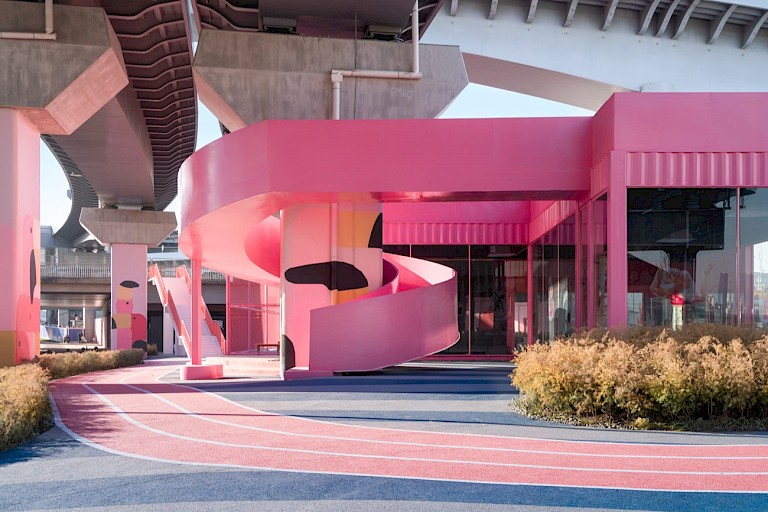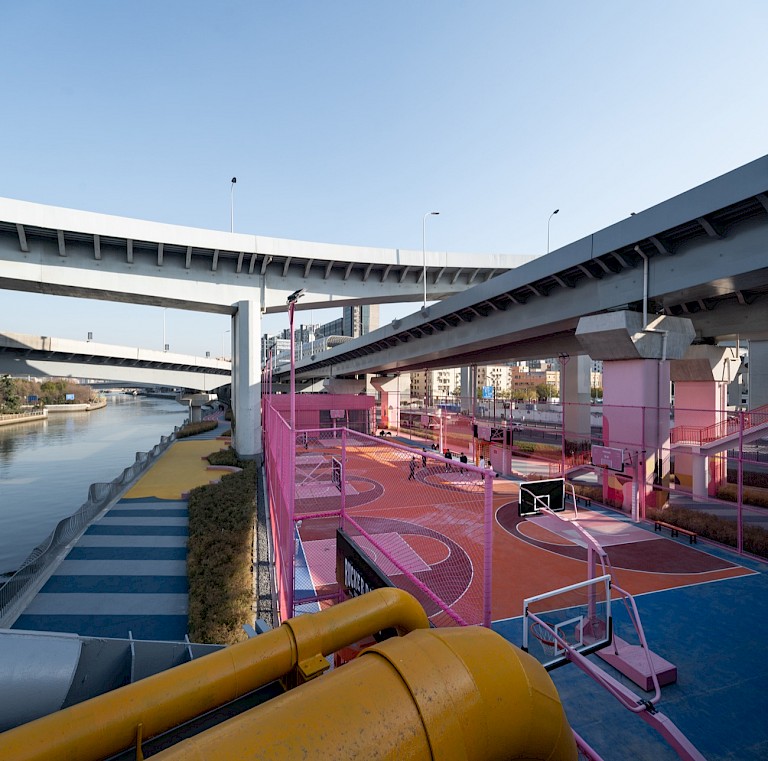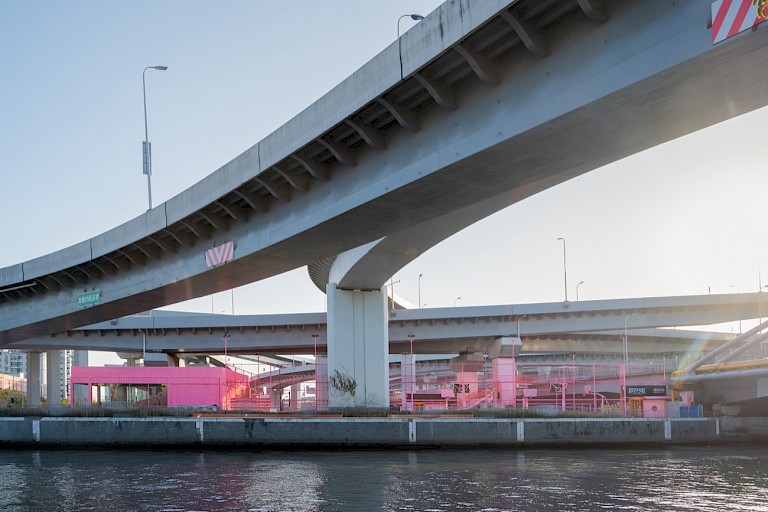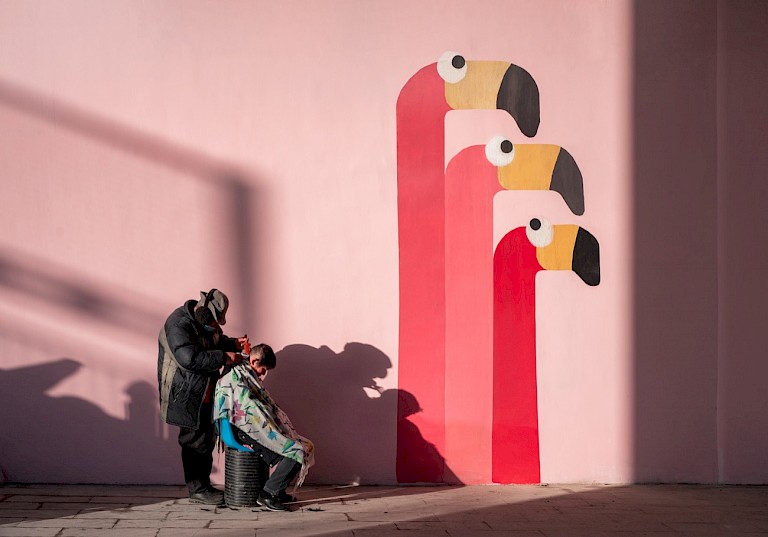



With the approval and consent of the district government, the construction theme of the Traffic Management Center of the District Construction Committee and the full support of the Greening Bureau, the design of regeneration project of the space under the Suzhou Creek Central Overpass has cooperated with experts from Urban Regeneration Majors at home and abroad as well as experts from the Department of Landscape Architecture of Tongji University to conduct a study and research on how to reuse the space under the bridge. In order to better express the design, the landscape team has also joined hands with the graphic design team to optimize the re-creation of the fashionable and distinctive animal-themed image, creating a unique identity for the area. In addition, the site cooperates with Rucker Park, which is a hotspot for sports in Shanghai, to manage the site and venues in a unified way with the aim of creating a stronger connection among the three blocks. The space under the bridge is transformed into a brand new place for public participation and entertainment through the combination of landscape public space design and open sports functional attributes, providing an outdoor recreational space for the surrounding residents and at the same time, serving the leisure life of the whole Shanghai residents.
With the innovative creation of the overall animal IP image, the introduction of the all-round citizen's sports court, the bright and bold emblematic colored drawings, as well as the visually striking public art design, the space underneath the Central Overpass has already become a unique area-based landmark in Changning District.The design team has transformed the previously uninvited grey area in the city into the most popular public space in the community. In actual operation, the professional team is chosen to manage and operate the space, which reduces the problems that may arise in the future due to mismanagement and greatly improves the utilization rate of the space. From a comprehensive point of view, such design and reconstruction not only improves the quality of life of the surrounding community, but also brings a new culture and lifestyle to the people, providing a new perspective and idea for the research and practice of urban regeneration issues, especially the reuse of unused and abandoned space, which is of great significance for similar projects throughout the country.




